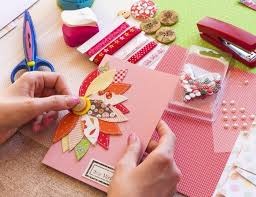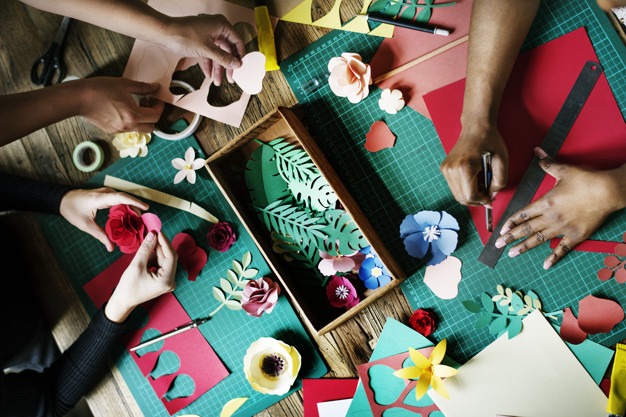1. Improve motor skills and coordination: Doing craft and craft activities aid in developing both large and small muscles and eye-hand coordination. They also help children learn fine motor control, which is crucial for writing. Activities like gripping a color pencil or a paintbrush, using scissors, squeezing the bottle of glue, or rolling play dough develops and improves dexterity. Since children use both hands for these activities, their coordination also improves.
2. Enhance cognitive skills: These activities employ the senses and encourage neural connections. Children’s brain synapses (connecting points between brain cells) are stimulated as they experiment and create. Also, craft promotes ‘executive function’ – a set of mental skills that help us pay attention, switch focus, plan and organize, multitask, remember details and manage time.
3. Encourage self-expression: Children love to visualize and express. However, lack of adequate language skills prevents them from conveying their thoughts. So, they are always looking for ways to express what is there in their mind. Craft activities allow children to express themselves freely. These activities also provide children with a creative outlet to explore and communicate their feelings and safely deal with scary emotions.
4. Teach self-regulation: craft activities relieve stress, promote calm and self-regulation. For instance, when using watercolors to paint, children need to wait for a coat to dry before applying the next one. This teaches them to persevere and be patient.
5. Develop self-esteem: Creating a piece of art, however simple, enhances children’s self-esteem. When a child completes a craft and craft activity and adults praise him, he feels happy and confident. So, it is essential to choose craft and craft activities based on the age of children. Also, adults must keep in mind that when a child finishes his activity, he should be praised for his effort and not the product.
6. Boost creative skills: craft is a domain where children can use their active imagination productively. According to the US-based International Child craftFoundation, children exposed to craft acquire the unique ability to think creatively, be original and discover new things.
7. Nurture problem-solving skills: Dealing with an artistic challenge helps develop problem-solving skills. Planning and executing a creative project require children to make choices and take decisions. Working independently, evaluating their own decisions, and, perhaps, changing them sharpens critical thinking and problem-solving abilities.
8. Foster social skills: Working together on creative activities allows children to share and interact with each other. Also, putting materials away and cleaning up after they are through with their activity helps them learn about teamwork and responsibility.
9. Adapt to changes: There is no right or wrong way of exploring one’s creativity. After drawing a picture or painting an image, often, children would look at their work, contemplate and make changes. This helps them learn to make and accept changes and adjust to them.
10. Augment visual processing skills: craft activities that help children recognize patterns, colors, and shapes, enhance visual processing skills.





